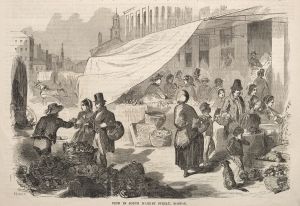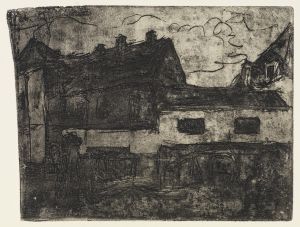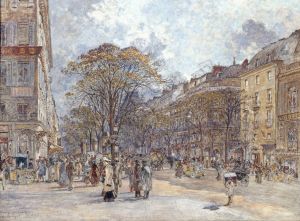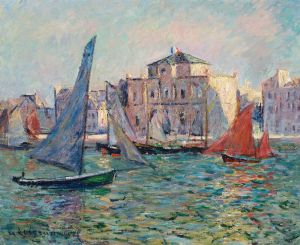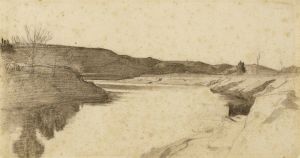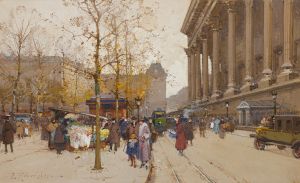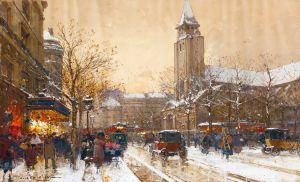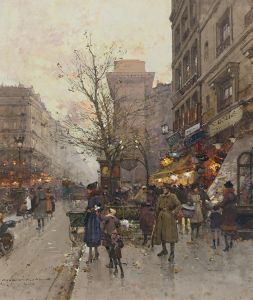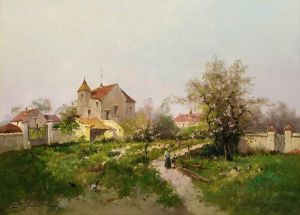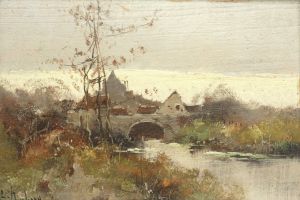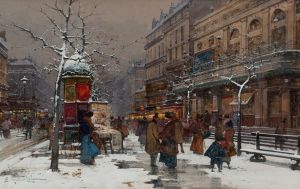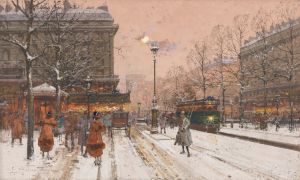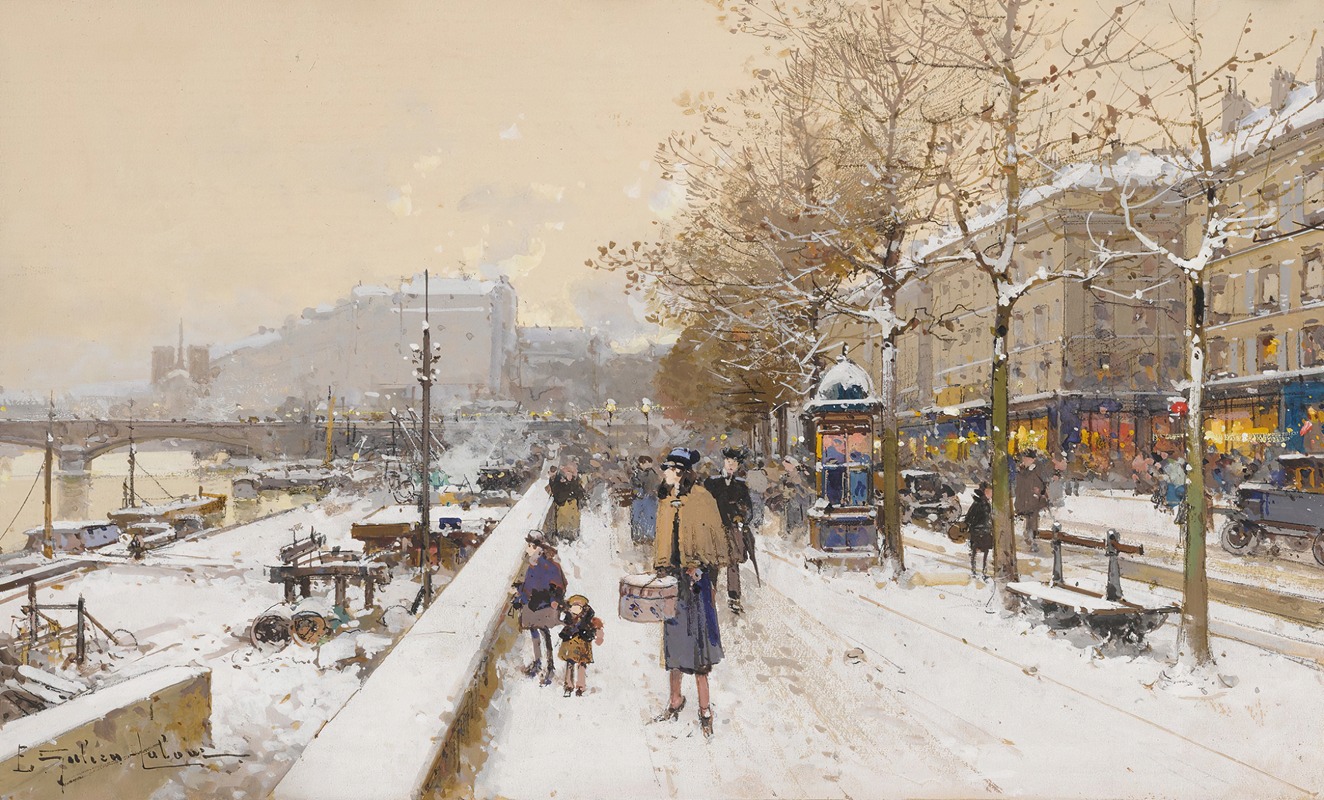
Quai Des Célestins
A hand-painted replica of Eugène Galien-Laloue’s masterpiece Quai Des Célestins, meticulously crafted by professional artists to capture the true essence of the original. Each piece is created with museum-quality canvas and rare mineral pigments, carefully painted by experienced artists with delicate brushstrokes and rich, layered colors to perfectly recreate the texture of the original artwork. Unlike machine-printed reproductions, this hand-painted version brings the painting to life, infused with the artist’s emotions and skill in every stroke. Whether for personal collection or home decoration, it instantly elevates the artistic atmosphere of any space.
Eugène Galien-Laloue (1854–1941) was a French artist known for his paintings of Parisian street scenes. His work, "Quai Des Célestins," is a notable example of his ability to capture the essence of Paris during the late 19th and early 20th centuries. Galien-Laloue was part of the school of artists who focused on the bustling life of Paris, often depicting the city's streets, markets, and public spaces with a keen eye for detail and atmosphere.
"Quai Des Célestins" is a painting that reflects Galien-Laloue's characteristic style, which combines elements of Impressionism with a more detailed and structured approach. This painting, like many of his works, showcases the vibrant life along the Seine River, a central feature of Paris. The Quai des Célestins is located in the 4th arrondissement of Paris, on the right bank of the Seine, and is known for its picturesque views and historical significance.
Galien-Laloue's paintings are often characterized by their use of light and color to create a sense of time and place. In "Quai Des Célestins," he employs a palette that captures the subtle hues of a Parisian day, possibly in the autumn or winter, as suggested by the muted tones and the attire of the figures. His technique often involved the use of gouache, a type of opaque watercolor, which allowed him to achieve a certain luminosity and depth in his work.
The scene depicted in "Quai Des Célestins" likely includes the everyday activities of Parisians, such as strolling along the riverbank, engaging in commerce, or simply enjoying the view. Galien-Laloue had a talent for portraying the ordinary moments of city life with a sense of charm and nostalgia, making his work appealing to both contemporary audiences and collectors today.
Galien-Laloue's contribution to art is significant in that he documented a period of transformation in Paris. During his lifetime, the city underwent considerable changes, including the modernization of its infrastructure and the expansion of its urban landscape. His paintings serve as historical records of this era, providing insight into the daily life and architecture of Paris at the time.
Despite his prolific output, Galien-Laloue's work was not widely recognized during his lifetime outside of France. However, in recent decades, there has been a resurgence of interest in his paintings, with collectors and art historians appreciating his ability to capture the spirit of Paris. His works are now held in various private collections and occasionally appear in exhibitions dedicated to 19th and early 20th-century French art.
In summary, "Quai Des Célestins" by Eugène Galien-Laloue is a testament to the artist's skill in depicting the lively and picturesque scenes of Paris. Through his detailed and atmospheric style, Galien-Laloue offers viewers a glimpse into the everyday life of a city that has long been a center of art and culture. His work continues to be celebrated for its historical value and artistic merit, ensuring his place among the notable painters of his time.






